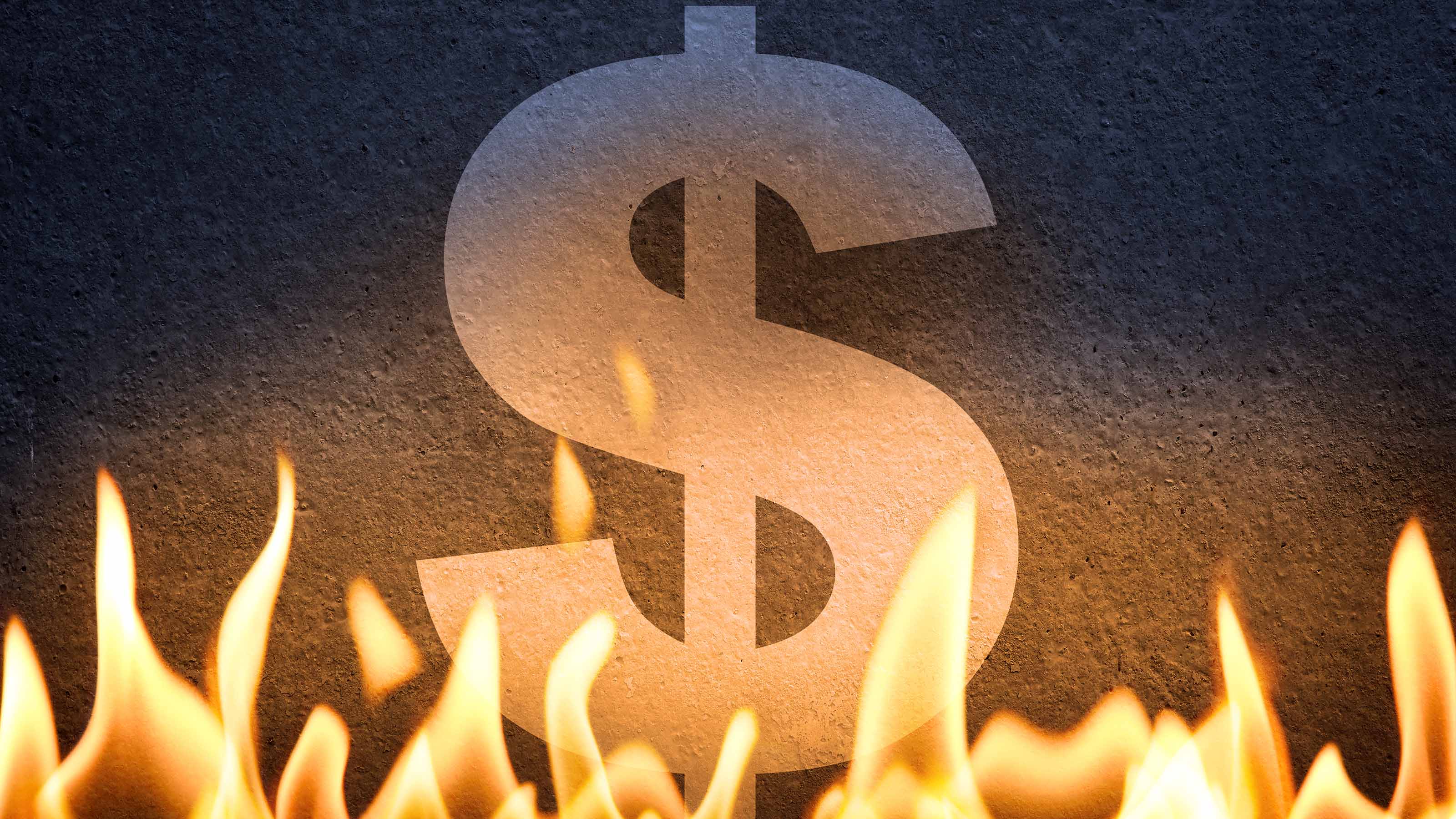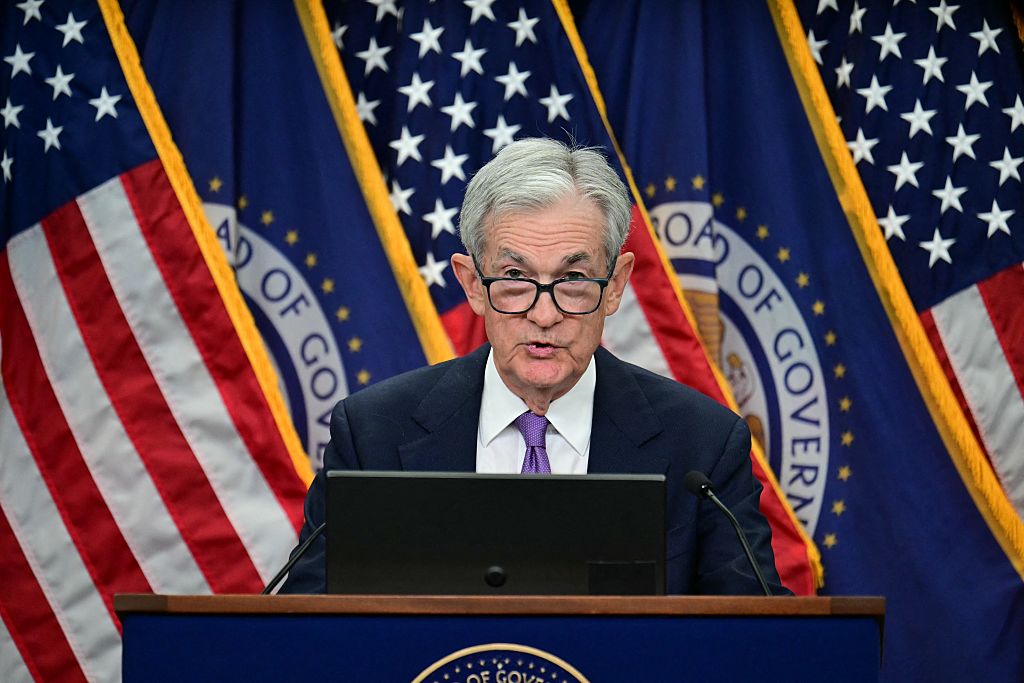Wholesale Inflation Comes In Hot: What the Experts Are Saying
The Fed is not likely to change course on rate hikes following a higher-than-expected rise in September's producer price index.


A reading of inflation at the wholesale level surprised to the upside Wednesday, stoking fears that tomorrow's report on consumer prices will likewise show that inflation remains out of the Federal Reserve's control.
The producer price index (PPI) rose 0.4% in September, well ahead of economists' estimate for a gain of 0.2%. Year-over-year, PPI rose 8.5%, or a slight deceleration from August's increase of 8.7%.
Excluding food, energy and trade services, PPI increased 0.4% month-over-month, the largest rise since May, the Bureau of Labor Statistics said. Year-over-year, the index rose 5.6%.
From just $107.88 $24.99 for Kiplinger Personal Finance
Become a smarter, better informed investor. Subscribe from just $107.88 $24.99, plus get up to 4 Special Issues

Sign up for Kiplinger’s Free Newsletters
Profit and prosper with the best of expert advice on investing, taxes, retirement, personal finance and more - straight to your e-mail.
Profit and prosper with the best of expert advice - straight to your e-mail.
The CPI report slated for release tomorrow might get more attention than its PPI cousin, but today's report is arguably just as important. PPI serves as a measure for the rate of increase in inflation, while CPI is more of a proxy for consumers' costs of living. If PPI is upstream, then CPI is downstream.
The bottom line is that the Fed is aggressively raising interest rates in order to combat red-hot inflation, and this latest report gives the central bank no reason to change course.
To get a sense of what the pros make of the PPI report, below please find a selection of commentary (sometimes edited for brevity) from economists, strategists, investment officers and the like.
- "The producer price index (PPI) increased by 0.4% in September, two tenths above consensus expectations. This reflected sharp increases in energy (+0.7%) and food (+1.2%) prices, and slower core producer price inflation (+0.3%). Core producer price inflation was weighed on by a 0.1% increase in retail margins, and the PPI excluding food, energy and trade services increased by 0.4%. The 'old methodology' core PPI – finished goods excluding food and energy – increased by 0.2%. Core intermediate producer prices decreased by 0.6%, while the prices of crude materials less food and energy increased by 0.6%." – Jan Hatzius, chief economist, Global Investment Research Division at Goldman Sachs
- "The September Producer Price Index (PPI) offers the latest evidence that inflation pressures are subsiding, but that there remains significant ground to cover in returning inflation to a more palatable level, and that the path will bear some curves. The PPI for final demand rose 0.4% in September to break back-to-back declines in July and August. Our preferred measure of core PPI, which excludes food, energy and trade services, also rose 0.4%, which was the largest monthly gain since May. September's unexpected strength can be traced to a 0.6% increase in core services. However, the prospect for disinflation in the goods sector remains intact. Transportation and warehousing costs fell for a third consecutive month, trade services margins were little changed and intermediate costs continue to trend lower." – Sarah House, senior economist at Wells Fargo
- "The PPI report for September was a negative report for future inflation as both goods and services prices increased for the month. Today's data point just confirms that the Fed has still a long way ahead to bring inflation under control. The Producer Price Index (PPI) declined slightly on a year-over-year basis, but inflation continued to be sticky as shown by PPI excluding food and energy, which nudged upwards after five months of continued declines. While most of the decline over the last two months was due to falling energy prices, two-thirds of the increase in the index in September was due to a 0.4% increase in final demand services. The largest increase for the month can be traced to a 6.4% increase in traveler accommodation services. Despite the progress made over the last two months, the Fed still has a tough road ahead. As investors and the Fed await tomorrow's Consumer Price Index report, today's PPI release further supports our view that the Fed will hike by 75 basis points at their upcoming November meeting. [A basis point is 1/100th of a percentage point.]" – Giampiero Fuentes, economist at Raymond James
- "Wednesday's stronger-than-expected reading on producer prices validates the Federal Reserve's aggressive pace of rate hikes, even if those measures eventually cause damage to the overall economy. The rise in producer prices in September suggests that Thursday's Consumer Price Index will likely also remain elevated, as the prices consumers pay for goods in the future are derived from the prices that producers pay today. In our view, inflation will remain elevated for longer than the Federal Reserve expects, and interest rates will remain higher than investors expect, which suggests elevated stock market volatility over the next year. Investors with a very short time horizon should remain on the sidelines, as this market cannot be won. Investors with at least a three-year time horizon should be embracing this opportunity to dollar cost average into stocks and bonds in accordance with their financial plan. This is a truly once in a generation opportunity to create long-term wealth by investing incrementally into a terrible market for both stocks and bonds." – Ryan Belanger, founder and managing principal at Claro Advisors
- "The Producer Price Index came in at 0.4% for September versus the forecast of 0.2%. The more closely monitored Consumer Price Index will come out tomorrow, and barring surprises, will provide the Fed further cover to continue on its aggressive path of tightening. Though we caution investors against overreacting to individual data points, it will be important to assess whether headline CPI continues its downward trajectory. More importantly, we will be carefully watching whether broad price pressures reflected in core CPI and the Cleveland Fed's trimmed-mean CPI continue accelerating or whether we begin to see easing. We continue to believe that the Fed is more likely to overreact than underreact to inflation regarding its terminal rate in this tightening cycle given recent policy mistakes." – Daniel Berkowitz, senior investment officer at Prudent Management Associates
- "Producer prices, the cost of producing goods and services, jumped again in September by 0.4%, more sharply than expected and this will feed through to what consumers will have to pay. This will be yet more uncomfortable reading for Fed policymakers, following on from the latest robust snapshot of the U.S. labor market, with the unemployment rate coming in at 3.5%, down from 3.7%. Significant warmth is still radiating in the economy, so another 0.75% hike is expected at the next Fed meeting. Further hikes are also expected, which will take wind out of the sails of growth, but the Fed's actions indicate it is committed to sacrificing an expanding economy to rein in rampant inflation. With all this in mind, there aren't likely to be many chinks in the dollar armor any time soon, with the strength of the greenback continuing to cause continued inflationary pressures in other economies, as imports priced in dollars, remain more expensive." – Susannah Streeter, senior investment and markets analyst at Hargreaves Lansdown
- "September's PPI report was a bit above consensus and close to Comerica's more pessimistic view of near-term price pressures. Food prices had another big unwelcome jump in September. Pressures on the cost of living will continue to weigh on consumer spending near term and likely intensify with winter heating costs much higher this year than last. Inflationary momentum has built in the U.S. economy. Many businesses that saw big increases in their input costs over the last two years have taken time to pass those increases on to their own customers, which is keeping inflation high in late 2022. The hot September PPI report will affirm the Fed's pessimistic view of the inflation outlook and support another big rate hike at their November decision. The takeaway for the U.S. economy is that monetary policy in late 2022 and early 2023 will be quite restrictive, and is likely sufficient to push the U.S. into a recession." – Bill Adams, chief economist at Comerica Bank
- "In a word: 'Reversal.' September producer prices reversed course and rose from a month ago after two consecutive monthly declines in August and July. Producer prices rose across most major categories and will likely keep pressure on consumer prices in the near term. Base effects in September made the year-over-year growth rate decelerate to 8.5% from 8.7% in August. Investors and central bankers need to see consistent monthly declines in prices before they will be convinced that inflation is easing. Producer prices for services have risen each month since December 2020 and illustrate the bifurcated path between goods inflation and services inflation. This report does not yet have convincing evidence that inflation is cooling across the broad swath of the economy. Expect to see the Fed recommit to fighting inflation at the risk of pushing the economy into recession. We expect to see services inflation persist longer than goods inflation in tomorrow's consumer price report." – Jeffrey Roach, chief economist at LPL Financial
Profit and prosper with the best of Kiplinger's advice on investing, taxes, retirement, personal finance and much more. Delivered daily. Enter your email in the box and click Sign Me Up.

Dan Burrows is Kiplinger's senior investing writer, having joined the publication full time in 2016.
A long-time financial journalist, Dan is a veteran of MarketWatch, CBS MoneyWatch, SmartMoney, InvestorPlace, DailyFinance and other tier 1 national publications. He has written for The Wall Street Journal, Bloomberg and Consumer Reports and his stories have appeared in the New York Daily News, the San Jose Mercury News and Investor's Business Daily, among many other outlets. As a senior writer at AOL's DailyFinance, Dan reported market news from the floor of the New York Stock Exchange.
Once upon a time – before his days as a financial reporter and assistant financial editor at legendary fashion trade paper Women's Wear Daily – Dan worked for Spy magazine, scribbled away at Time Inc. and contributed to Maxim magazine back when lad mags were a thing. He's also written for Esquire magazine's Dubious Achievements Awards.
In his current role at Kiplinger, Dan writes about markets and macroeconomics.
Dan holds a bachelor's degree from Oberlin College and a master's degree from Columbia University.
Disclosure: Dan does not trade individual stocks or securities. He is eternally long the U.S equity market, primarily through tax-advantaged accounts.
-
 Dow Hits New High Then Falls 466 Points: Stock Market Today
Dow Hits New High Then Falls 466 Points: Stock Market TodayThe Nasdaq Composite, with a little help from tech's friends, rises to within 300 points of its own new all-time high.
-
 The Best Vanguard Bond Funds to Buy
The Best Vanguard Bond Funds to BuyInvestors seeking the best Vanguard bond funds can pick between mutual funds and ETFs spanning maturities, credit qualities, tax treatment and geographies.
-
 Are You Afraid of an IRS Audit? 8 Ways to Beat Tax Audit Anxiety
Are You Afraid of an IRS Audit? 8 Ways to Beat Tax Audit AnxietyTax Season Tax audit anxiety is like a wild beast. Here’s how you can help tame it.
-
 The November CPI Report Is Out. Here's What It Means for Rising Prices
The November CPI Report Is Out. Here's What It Means for Rising PricesThe November CPI report came in lighter than expected, but the delayed data give an incomplete picture of inflation, say economists.
-
 The Delayed November Jobs Report Is Out. Here's What It Means for the Fed and Rate Cuts
The Delayed November Jobs Report Is Out. Here's What It Means for the Fed and Rate CutsThe November jobs report came in higher than expected, although it still shows plenty of signs of weakness in the labor market.
-
 December Fed Meeting: Updates and Commentary
December Fed Meeting: Updates and CommentaryThe December Fed meeting is one of the last key economic events of 2025, with Wall Street closely watching what Chair Powell & Co. will do about interest rates.
-
 The Delayed September Jobs Report Is Out. Here's What It Means for the Fed
The Delayed September Jobs Report Is Out. Here's What It Means for the FedThe September jobs report came in much higher than expected, lowering expectations for a December rate cut.
-
 October Fed Meeting: Updates and Commentary
October Fed Meeting: Updates and CommentaryThe October Fed meeting is a key economic event, with Wall Street turned into what Fed Chair Powell & Co. did about interest rates.
-
 The Delayed September CPI Report is Out. Here's What it Signals for the Fed.
The Delayed September CPI Report is Out. Here's What it Signals for the Fed.The September CPI report showed that inflation remains tame – and all but confirms another rate cut from the Fed.
-
 Banks Are Sounding the Alarm About Stablecoins
Banks Are Sounding the Alarm About StablecoinsThe Kiplinger Letter The banking industry says stablecoins could have a negative impact on lending.
-
 Government Shutdown to Delay Data, Including Key Jobs Report
Government Shutdown to Delay Data, Including Key Jobs ReportWhile government shutdowns typically don't impact stock returns, they can delay the release of key economic data – including the monthly jobs report.